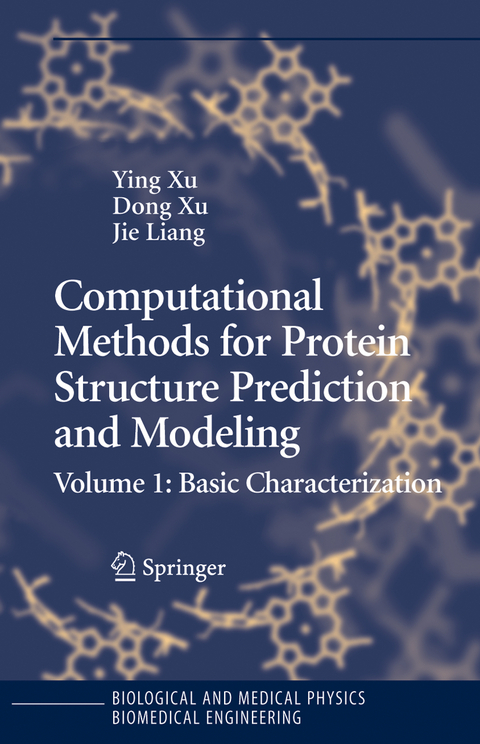
Computational Methods for Protein Structure Prediction and Modeling
Springer-Verlag New York Inc.
978-1-4419-2205-2 (ISBN)
Dr. Ying Xu is Regents-GRA Eminent Scholar and Professor at the University of Georgia. Dr. Dong Xu is the Director of the Digital Biology Laboratory at the University of Missouri-Columbia. Dr. Jie Liang is the Director for the Center for Bioinformatics at the University of Illinois at Chicago.
A Historical Perspective and Overview of Protein Structure Prediction.- Empirical Force Fields.- Knowledge-Based Energy Functions for Computational Studies of Proteins.- Computational Methods for Domain Partitioning of Protein Structures.- Protein Structure Comparison and Classification.- Computation of Protein Geometry and Its Applications: Packing and Function Prediction.- Local Structure Prediction of Proteins.- Protein Contact Map Prediction.- Modeling Protein Aggregate Assembly and Structure.- Homology-Based Modeling of Protein Structure.- Modeling Protein Structures Based on Density Maps at Intermediate Resolutions.
| Erscheint lt. Verlag | 29.11.2010 |
|---|---|
| Reihe/Serie | Biological and Medical Physics, Biomedical Engineering |
| Zusatzinfo | 88 Illustrations, black and white; XX, 396 p. 88 illus. |
| Verlagsort | New York, NY |
| Sprache | englisch |
| Maße | 155 x 235 mm |
| Themenwelt | Mathematik / Informatik ► Informatik ► Theorie / Studium |
| Informatik ► Weitere Themen ► Bioinformatik | |
| Naturwissenschaften ► Biologie ► Biochemie | |
| Naturwissenschaften ► Biologie ► Genetik / Molekularbiologie | |
| Naturwissenschaften ► Physik / Astronomie ► Angewandte Physik | |
| ISBN-10 | 1-4419-2205-9 / 1441922059 |
| ISBN-13 | 978-1-4419-2205-2 / 9781441922052 |
| Zustand | Neuware |
| Informationen gemäß Produktsicherheitsverordnung (GPSR) | |
| Haben Sie eine Frage zum Produkt? |
aus dem Bereich


